anesthesia awareness
description: inadequate unconscious state during general anesthesia
5 results
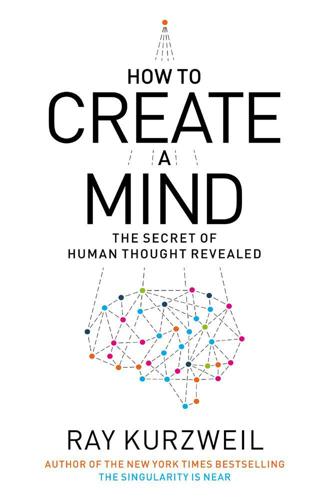
How to Create a Mind: The Secret of Human Thought Revealed
by
Ray Kurzweil
Published 13 Nov 2012
We cannot even say for certain that subjects are not conscious when anesthetized. All we do know is that people do not remember their experiences afterward. Even that is not universal, as some people do remember—accurately—their experience while under anesthesia, including, for example, conversations by their surgeons. Called anesthesia awareness, this phenomenon is estimated to occur about 40,000 times a year in the United States.3 But even setting that aside, consciousness and memory are completely different concepts. As I have discussed extensively, if I think back on my moment-to-moment experiences over the past day, I have had a vast number of sensory impressions yet I remember very few of them.
…
(film), 210 Aiken, Howard, 189 Alexander, Richard D., 224 algorithms, intelligent, 6–7 Allen, Paul, 266–72 Allman, John M., 179 Alzheimer’s disease, 102 amygdala, 71, 77, 106–8, 109 analog processing, digital emulation of, 194–95, 274 Analytical Engine, 189–90 anesthesia awareness, 206 animal behavior, evolution of, 122 apical dendrites, 110 aptitude, 111–12 artificial intelligence (AI), 7, 37–38, 50, 265, 280 Allen on, 270–71 biological models for, 273 chess playing and, 6, 38–39, 165–66, 257 conversation and, 168–69 as extension of neocortex, 172, 276 knowledge bases and, 4, 6–7, 170–71, 246, 247 language and speech processing in, 72–73, 92, 115–16, 122–23, 128, 135–41, 142–46, 145, 149–50, 152–53, 156, 157–72 medicine and, 6–7, 39, 108, 156, 160–61, 168 omnipresence of, 158 optimization of pattern recognition in, 112 sparse coding in, 95–96 see also neocortex, digital Audience, Inc., 96–97, 98 auditory association, 77 auditory cortex, 7, 77, 97, 128 auditory information processing, 96–97, 97 auditory nerve, 97, 128 data reduction in, 138 auditory pathway, 97 autoassociation, 59–61, 133, 173 automobiles, self-driving, 7, 159, 261, 274 axons, 36, 42, 43, 66, 67, 90, 100, 113, 150, 173 as digital processors, 191 Babbage, Charles, 189–90 Bainbridge, David, 179 bandwidth, of Internet, 254 basis functions, 103–4 Bedny, Marina, 87 Bell System Technical Journal, 184 Berger, Theodore, 102 Berners-Lee, Tim, 172 Bernoulli’s principle, 5, 8 Better Angels of Our Nature: Why Violence Has Declined (Pinker), 27 Bierce, Ambrose, 66 BINAC, 189 Bing, 171 biology, 37 DNA as unifying theory of, 17 reverse-engineering of, 4–5 biomedicine, LOAR and, 251, 252, 253 Blackmore, Susan, 211 Blade Runner (film), 210 Blakeslee, Sandra, 73, 156 Blue Brain Project, 63, 80, 124–28, 125 Bombe, 187 Bostrom, Nick, 129–30, 222 Boyden, Ed, 126 brain, evolution of, 2 brain, human: analog computing in, 274 complexity of, 8–9, 181, 272 digital implants in, 243–44 digital neocortex as extension of, 172, 276 hemispheres of, 77, 224–49 LOAR as applied to, 261–63, 263, 264, 265 prediction by, 250 redundancy of, 9 reverse-engineering of, see brain, human, computer emulation of; neocortex, digital structure of, 77 brain, human, computer emulation of, 5, 7, 179–98, 273, 280 invariance and, 197 memory requirements of, 196–97 parallel processing in, 197 processing speed in, 195–96 redundancy in, 197 singularity and, 194 Turing test and, 159–60, 169, 170, 178, 191, 213, 214, 233, 276, 298n von Neumann on, 191–95 see also neocortex, digital brain, mammalian: hierarchical thinking as unique to, 2–3, 35 neocortex in, 78, 93, 286n brain plasticity, 79, 87–89, 91, 182, 193, 197, 225, 280 as evidence of universal neocortical processing, 86, 88, 152 limitations on, 88–89 brain scanning, 7, 263, 308n destructive, 264, 265, 309n–11n LOAR and, 262–63, 263, 264, 265 nondestructive, 127, 129, 264, 312n–13n noninvasive, 273 Venn diagram of, 262 brain simulations, 124–31, 262 brain stem, 36, 99 Bremermann, Hans, 316n Britain, Battle of, 187 Brodsky, Joseph, 199 Burns, Eric A., 113 busy beaver problem, 207 Butler, Samuel, 62, 199–200, 224, 248–49 Byron, Ada, Countess of Lovelace, 190, 191 California, University of, at Berkeley, 88 “CALO” project, 162 carbon atoms, information structures based on, 2 Carroll, Lewis, 109 cells, replacement of, 245, 246 cellular automata, 236–39 cerebellum, 7, 77, 103–4 uniform structure of, 103 cerebral cortex, 7–8 see also neocortex Chalmers, David, 201–2, 218, 241 “chatbots,” 161 chemistry, 37 chess, AI systems and, 6, 38–39, 165–66, 257 chimpanzees: language and, 3, 41 tool use by, 41 “Chinese room” thought experiment, 170, 274–75 Chomsky, Noam, 56, 158 Church, Alonzo, 186 Church-Turing thesis, 186 civil rights, 278 cloud computing, 116–17, 123, 246, 279–80 cochlea, 96, 97, 135, 138 cochlear implants, 243 Cockburn, David, 214 Cold Spring Harbor Laboratory, 129 Colossus, 187, 188 “common sense,” 40 communication, reliability of, 182–85, 190 communication technology, LOAR and, 253, 254 compatibilism, 234 complexity, 198, 233 of human brain, 8–9, 181, 272 modeling and, 37–38 true vs. apparent, 10–11 computation: price/performance of, 4–5, 250–51, 257, 257, 267–68, 301n–3n thinking compared with to, 26–27 universality of, 26, 181–82, 185, 188, 192, 207 Computer and the Brain, The (von Neumann), 191 computers: brain emulated by, see brain, human, computer emulation of consciousness and, 209–11, 213–15, 223 intelligent algorithms employed by, 6–7 knowledge base expanded by, 4, 246, 247 logic gates in, 185 memory in, 185, 259, 260, 268, 301n–3n, 306n–7n reliability of communication by, 182–85, 190 see also neocortex, digital “Computing Machinery and Intelligence” (Turing), 191 conditionals, 65, 69, 153, 189, 190 confabulation, 70, 217, 227, 228, 229 connectionism, 133, 191 “connectome,” 262 consciousness, 11, 199–209 cerebral hemispheres and, 226–29 computers and, 209–11, 213–15, 223, 233 Descartes on, 221–22 dualist views of, 202–3 Eastern vs.
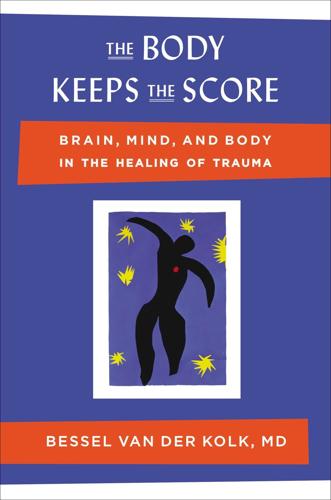
The Body Keeps the Score: Brain, Mind, and Body in the Healing of Trauma
by
Bessel van Der Kolk M. D.
Published 7 Sep 2015
However, because she was given insufficient anesthesia, she awakened after the operation began and remained aware nearly to the end, at times falling into what she called “a light sleep” or “dream,” at times experiencing the full horror of her situation. She was unable to alert the OR team by moving or crying out because she had been given a standard muscle relaxant to prevent muscle contractions during surgery. Some degree of “anesthesia awareness” is now estimated to occur in approximately thirty thousand surgical patients in the United States every year,32 and I had previously testified on behalf of several people who were traumatized by the experience. Nancy, however, did not want to sue her surgeon or anesthetist. Her entire focus was on bringing the reality of her trauma to consciousness so that she could free herself from its intrusions into her everyday life.
…
She chose a Boston hospital for the surgery, asked for a preoperative meeting with the surgeons and the anesthesiologist specifically to discuss her prior experience, and requested that I be allowed to join them in the operating room. For the first time in many years I put on a surgical scrub suit and accompanied her into the OR while the anesthesia was induced. This time she woke up to a feeling of safety. Two years later I wrote Nancy asking her permission to use her account of anesthesia awareness in this chapter. In her reply she updated me on the progress of her recovery: “I wish I could say that the surgery to which you were so kind to accompany me ended my suffering. That sadly was not the case. After about six more months I made two choices that proved provident. I left my CBT therapist to work with a psychodynamic psychiatrist and I joined a Pilates class.
…
abandonment, 140, 141, 150, 179, 301, 304, 327, 340, 350 Abilify, 37, 101, 226 ACE (Adverse Childhood Experiences) study, 85, 144–48, 156, 347, 350–51 acetylcholine, 266 acupressure, 264–65, 410n–11n acupuncture, 231, 410n–11n addiction, see substance abuse addictive behaviors, 288–89 see also specific behaviors ADHD (attention deficit hyperactivity disorder), 107, 136, 150, 310, 322 adolescent behavior problems, child-caregiver relationship as predictor of, 160–61 adrenaline, 46, 61, 77, 176, 225 Aeschylus, 332 Afghanistan War: deaths in, 348 veterans of, 222–23, 229, 332 agency, sense of, 95–98, 331, 355 as lacking in childhood trauma survivors, 113 Ainsworth, Mary, 115 Ajax (Sophocles), 332 alcoholism, 146 alexithymia, 98–99, 247, 272–73, 291, 319 All Quiet on the Western Front (Remarque), 171, 186 alpha-theta training, 321, 326 alpha waves, 314–15, 321, 326, 417n American Academy of Pediatrics, 348 American College of Neuropsychopharmacology (ACNP), 29, 33 American Counseling Association, 165, 393n American Journal of Psychiatry, 27, 140, 164 American Psychiatric Association (APA): developmental trauma disorder diagnosis rejected by, 149, 158–59, 166 PTSD recognized by, 19 see also Diagnostic and Statistical Manual of Mental Disorders (DSM) American Psychological Association, 165, 393n amnesia, 179, 183 dissociative, 190 see also repressed memory amygdala, 33, 35, 42, 68–69, 301 balance between MPFC and, 62–64 fight/flight response and, 60–61, 61, 247, 265, 408n mindfulness and, 209–10 Anda, Robert, 144, 148 androstenedione, 163 anesthesia awareness, 196–99 Angell, Marcia, 374n–75n Angelou, Maya, 356 animals, in trauma therapy, 80, 150–51, 213 anorexia nervosa, 98–99 anterior cingulate, 91, 91, 254, 376n, 387n Anthony (trauma survivor), 150 anticonvulsant drugs, 225 antidepressants, 35, 37, 136, 146, 225 see also specific drugs antipsychotic drugs, 27–29, 101, 136, 224, 225–27 children and, 37–38, 226 PTSD and, 226–27 see also specific drugs anxiety, 150 ARC (attachment, self-regulation, competency) model, 401n Archimedes, 92 arousal, 56, 107, 153, 165 flashbacks and, 42–43, 196–97 in infants, 84, 113, 121, 161 memory and, 175–76 neurofeedback and, 326 PTSD and, 157, 326 regulation of, 77–79, 113, 160, 161, 205–8 sexual, 94, 108 SNS and, 77 soothing and, 113 yoga and, 270 see also threat, hypersensitivity to art, trauma recovery and, 242–43 asanas, 270, 272 Assault, The (film), 375 athletics, 349, 355 Ativan, 225 attachment, 109–11, 113, 128–29, 210, 213, 318, 401n anxious (ambivalent), 116, 117 avoidant, 116, 117 as basic instinct, 115 ongoing need for, 114–15 resilience and, 161 in rhesus monkeys, 153–54 secure, 115–16, 117, 154–55 attachment, disorganized, 117, 166, 381n long-term effects of, 119–21 psychiatric and physiological problems from, 118 socioeconomic stress and, 117–18 trauma and, 118–19 traumatized parents as contributors to, 118 attachment disorder, 282 attention deficit disorder (ADD), 151 attention deficit hyperactivity disorder (ADHD), 107, 136, 150 attractors, 32 attunement, emotional, 111–14, 117, 118, 122, 161, 213, 215, 354 lack of, dissociation and, 121–22 in relationships, 210 Auden, W.
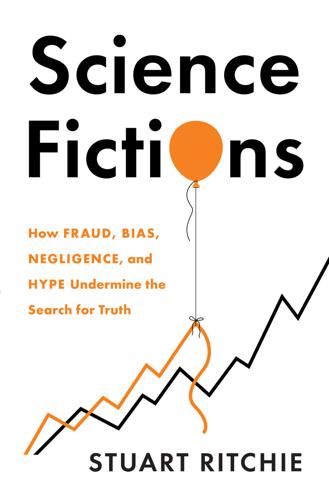
Science Fictions: How Fraud, Bias, Negligence, and Hype Undermine the Search for Truth
by
Stuart Ritchie
Published 20 Jul 2020
Prasad & Adam S. Cifu, Ending Medical Reversal: Improving Outcomes, Saving Lives (Baltimore: Johns Hopkins University Press, 2015). 58. Joshua Lang, ‘Awakening’, The Atlantic, Feb. 2013; https://www.theatlantic.com/magazine/archive/2013/01/awakening/309188/ 59. Michael S. Avidan et al., ‘Anesthesia Awareness and the Bispectral Index’, New England Journal of Medicine 358, no. 11 (13 Mar. 2008): 1097; https://doi.org/10.1056/NEJMoa0707361 60. Diana Herrera-Perez et al., ‘A Comprehensive Review of Randomized Clinical Trials in Three Medical Journals Reveals 396 Medical Reversals’, eLife 8 (11 June 2019): e45183; https://doi.org/10.7554/eLife.45183.This was a follow-up to a similar study they’d done before, which revealed 146 reversals: Vinay Prasad et al., ‘A Decade of Reversal: An Analysis of 146 Contradicted Medical Practices’, Mayo Clinic Proceedings 88, no. 8 (Aug. 2013): pp. 790–98; https://doi.org/10.1016/j. mayocp.2013.05.012 61.
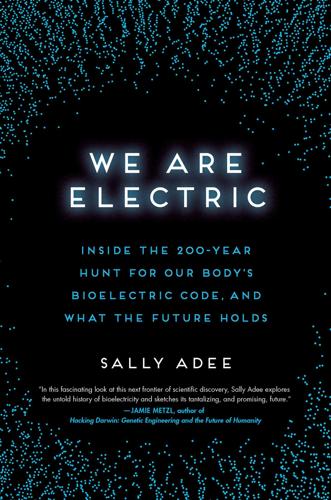
We Are Electric: Inside the 200-Year Hunt for Our Body's Bioelectric Code, and What the Future Holds
by
Sally Adee
Published 27 Feb 2023
“Effect of the Inhaled Anesthetics Isoflurane, Sevoflurane and Desflurane on the Neuropathogenesis of Alzheimer’s Disease (Review).” Molecular Medicine Reports, vol. 12, no. 1 (2015), pp. 3–12 16 Robson, David. “This is what it’s like waking up during surgery,” Mosaic, 12 March 2019 <https://mosaicscience.com/story/anaesthesia-anesthesia-awake-awareness-surgery-operation-or-paralysed/> 17 Edelman, Elazer, et al. “Case 30-2020: A 54-Year-Old Man with Sudden Cardiac Arrest.” New England Journal of Medicine, vol. 383, no. 13 (2020), pp. 1263–75 18 Hesham, R. Omar, et al. “Licorice Abuse: Time to Send a Warning Message.” Therapeutic Advances in Endocrinology and Metabolism, vol. 3, no. 4 (2012), pp. 125–38 19 Actually, I noticed two patterns: most of the scientists who got hit with the most scathing criticism were women.
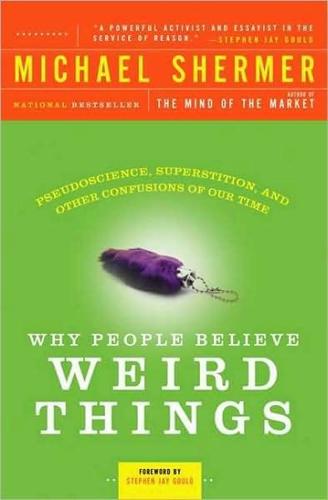
Why People Believe Weird Things: Pseudoscience, Superstition, and Other Confusions of Our Time
by
Michael Shermer
Published 1 Jan 1997
How do you explain that?" (1981, p. 90). Simple. Memories of verbal descriptions given by others during the NDE are converted into visual images of the scene and then rendered back into words. Further, quite frequently patients in trauma or surgery are not totally unconscious or under the anesthesia and are aware of what is happening around them. If the patient is in a teaching hospital, the attending physician or chief resident who performs the surgery would be describing the procedure for the other residents, thus enabling the NDE subject to give an accurate description of events. Something is happening in the NDE that cries out for explanation, but what?